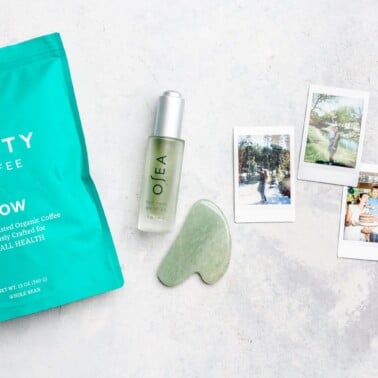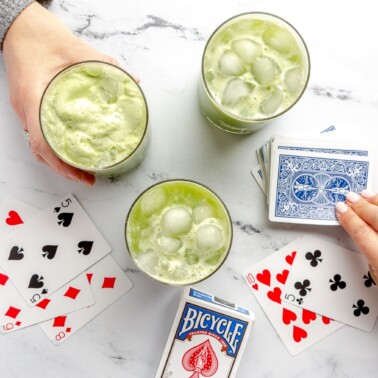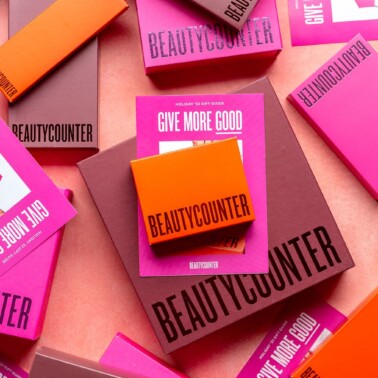Before I tried a Cleansing Balm, I was intimidated to use anything other than a super sudsy cleanser to wash my face. Similar to the phrase “jumbo-shrimp,” adding oil to my already-oily face sounded like the biggest oxymoron ever. As it turns out, there are a plethora of benefits to using an oil-based cleanser, like a Cleansing Balm, even if you have oily skin! Let’s dive in.
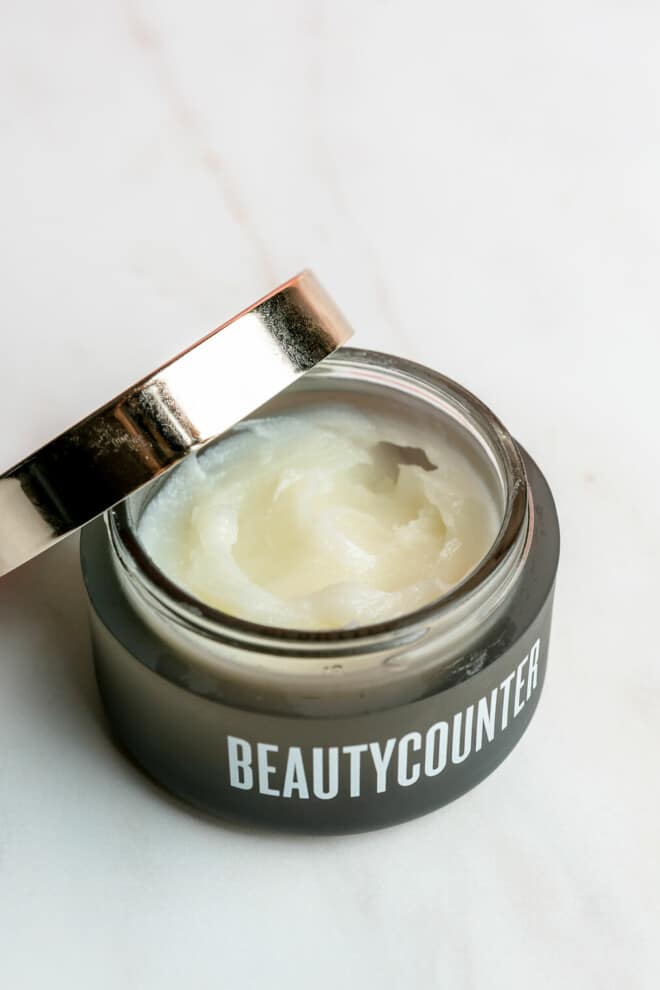
Beautycounter Counter+ Lotus Glow Cleansing Balm
As someone who used to struggle with acne, slathering a balm all over my face to wash my face was extremely nerve-wracking and something I avoided for a good bit (despite its rising popularity), but sure enough, after giving the cleansing balm a test drive, I found out that it is an amazing way to remove sunscreen, makeup, and unwanted oils …despite having oily skin. Even though it seems counterintuitive to apply an oily product to help remove oils, it does just that.
Here’s how it works: the oil from the cleansing balm clings to the oils (plus sunscreen and makeup) on your face, and you are left with LESS oil after cleansing with it. My mind was blown too when I learned about this! Ever heard of the phrase “we are like oil and water”? Oil and water don’t interact well together, but two oils do! They are drawn to each other and mix well, so if you are wanting to remove oily products, like sunscreen, or just general oil you acquired throughout the day, an oil-based cleanser is a great option for you.
After getting over my fear of oil-based cleansers, I decided to give the Lotus Glow Cleansing Balm a try and was so glad I did! It does an amazing job of removing makeup, sunscreen, and oil from my face. Let’s talk about all of its other amazing benefits and how I like to incorporate it into my skincare routine.
Why use Beautycounter?
Before diving into the world of cleansing balms, it’s important to know that not all beauty products, like cleansing balms, are created equal. Whether it’s your face lotion or foundation, putting products on your body can have either a positive or negative impact on your health. When our skin absorbs skincare or makeup (or even shampoo), the ingredients transfer into the bloodstream. This is why doctors caution women from using retinoids when pregnant – simply putting them on your face can cause them to be absorbed through the bloodstream and could potentially have a negative effect on the unborn baby.
If our bodies are absorbing the ingredients, it’s important to find out what ingredients are in our products and how those ingredients impact our health. Ingredients like formaldehyde, phthalates, or synthetic fragrances are just a few (out of the 1,800) of the ingredients that Beautycounter does not formulate with. This is why we at Fed & Fit trust and rely on Beautycounter for almost all of our skincare, makeup, and body products. They do all of the hard work for us by rigorously testing products to make sure that they are some of the safest ones you can get your hands on, while also being incredibly performative. We are also big fans of Primally Pure! Their face masks, deodorant, and serums are lovely.
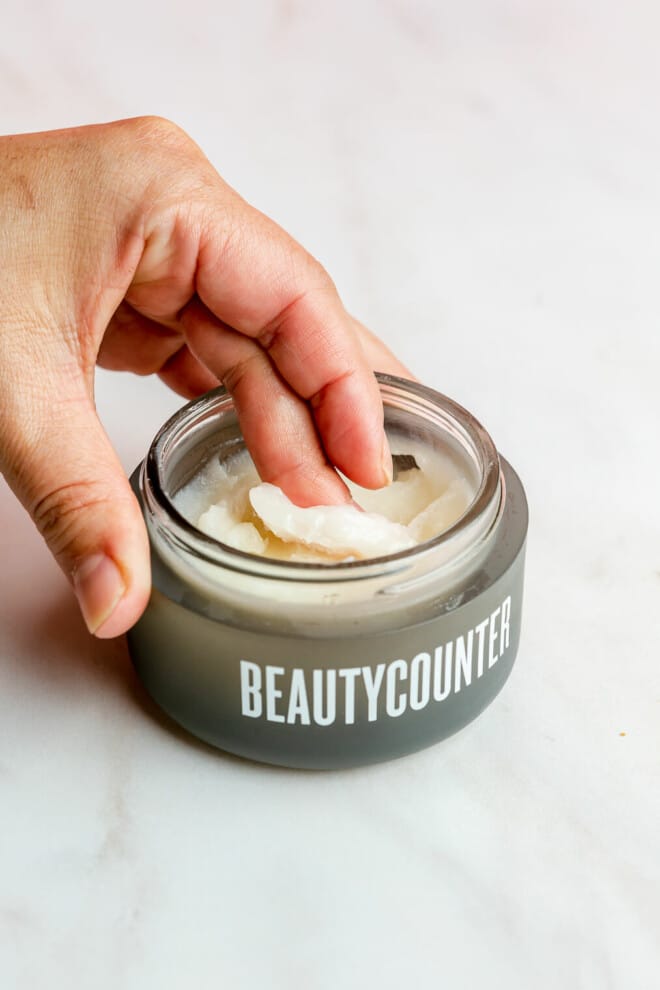
Key Ingredients in Cleansing Balm
Here are the top and highest-performing ingredients found in the Lotus Glow Cleansing Balm:
- Lotus Extract – helps decrease oil production, which can ward off blemishes. Also helps your skin increase in brightness and radiance. It is also calming to the skin.
- Jojoba Seed Oil + Avocado Seed Oil – have antioxidant, antibacterial, and anti-inflammatory properties.
- Prunus Armeniaca (Apricot) Kernel Oil – moisturizes the skin and can fight the signs of aging.
- Shea Butter – keeps the skin hydrated, healthy, and protected. Can help the skin heal faster and can calm and protect the skin against flare-ups, such as eczema.
Beautycounter’s Cleansing Balm is not formulated with:
- Polyethylene Glycol (PEG compounds): “PEGs are widely used in cosmetics as thickeners, solvents, softeners, and moisture-carriers. Depending on manufacturing processes, PEGs may be contaminated with measurable amounts of ethylene oxide and 1,4-dioxane, which are both carcinogens.”
- Synthetic flavor or fragrance: “An engineered scent or flavoring agent that may contain any combination of 3,000-plus stock chemical ingredients, including hormone disruptors and allergens.”
Benefits of Using Cleansing Balm
A cleansing balm comes with a wide variety of benefits! One of the most popular is its ability to cleanse your face from oils, water-proof makeup, and sunscreen without stripping your skin or leaving it dry. The Beautycounter Lotus Glow Cleansing Balm not only cleanses the skin without stripping it, but it also contains ingredients that are anti-aging, hydrating, and skin-protective. Overall, a cleansing balm is a great way to gently wash away stubborn oil, makeup, and sunscreen.
Cleansing Balm FAQs
What does a cleansing balm do?
A cleansing balm is designed to act as a cleanser or makeup remover. The benefits of using a balm (an oil-based cleanser) over a water-based cleanser, is that it can remove makeup, and other impurities (such as dirt and oil), without stripping away the (good) oils from your face or leaving it dry.
Cleansing balms are extremely hydrating, nourishing, and are usually very gentle. A cleansing balm is amazing for a variety of skin types, including those who are oily/ blemish prone or dry. This specific cleansing balm, the Lotus Glow Cleansing Balm, is also great for those with sensitive skin or those looking to slow down the aging process.
Is cleansing oil or balm better?
This answer all comes down to a preference on texture and your skin type! If you prefer a liquid texture, a cleansing oil would be ideal, but if you enjoy the thickness of a cleansing balm, and don’t want to worry about your product leaking, a cleansing balm is the perfect fit!
Skin types also play a role when trying to choose a cleansing balm or cleansing oil. A cleansing balm (like this one from Beautycounter) tends to work better with several different skin types, including sensitive, acne-prone, maturing, combination, and dry, while the Countertime Lipid Defense Cleansing Oil is ideal for dry skin (not sensitive or acne-prone).
Even though a lot of cleansing oils can be drying for most people, the Countertime Lipid Defense Cleansing Oil was specifically formatted for dry (and maturing) skin. Both a cleansing balm and cleansing oil do a fantastic job of removing facial sunscreen, makeup, and oil produced throughout the day. Here is a breakdown of how to choose a cleansing balm vs. a cleansing oil:
- Countertime Lipid Defense Cleansing Oil – dry, not sensitive, no acne, maturing
- Lotus Glow Cleansing Balm – sensitive, dry, acne-prone, maturing, combination skin
Do cleansing balms clog pores?
They do not if used correctly! According to EminenceOrganics.com, “Unlike traditional cleansers that rely on detergents to break down oil, cleansing oils draw out the oil, make-up and impurities that congest pores with a “like attracts like” approach.” So, instead of worrying about cleansing balms clogging our pores, we should celebrate that they actually remove oily stuff from your pores! I personally did experience breakouts while using a cleansing balm before adding in an extra step (see below!). Here is my favorite method:
- With clean hands, apply an almond-size amount of the cleansing balm to your dry face.
- Massage the balm into your face for about 1 minute. The balm can be applied over your eyes as well to remove eye makeup if needed.
- *This is the most important step in my opinion!* Wet your hands and add warm water. Massage warm water into your face. This will help the balm emulsify and be removed properly from your face.
- Add warm water to a muslin cloth, to remove the balm.
Special note: originally, I was not incorporating step four and it was causing me to break out! By adding in water as a third step, the water and balm are able to blend together and become a cleanser. Turning the balm into a cleanser (by adding water) and using a cloth to gently remove the balm, has been my personal favorite way to use the cleansing balm! Most people don’t have to incorporate step 3 and do just fine without it. I, however, find that my skin does better with a cleansing balm if I add this step in.
If you have sensitive or acne-prone skin, we recommend double-cleansing when using a cleansing balm. Double-cleansing is the process of cleansing with two types of cleansers: first, an oil-based cleanser (like a cleansing balm), followed by a water-based cleanser. This process will ensure that your skin is getting the best possible clean. The oil-based cleanser binds to other oils on your face, as well as makeup and sunscreen, and removes them, while the water-based cleanser, gives you a deeper clean. Healthline.com points out, “By getting rid of this stuff [oil] first, the second water-based cleanser can really work its way into the skin, removing the likes of grime and sweat.” A great water-based cleanser for sensitive skin is this Countermatch Foaming Cleanser, while those with acne-prone skin would benefit from the Countercontrol Clear Pore Cleanser, because of the salicylic acid in it.
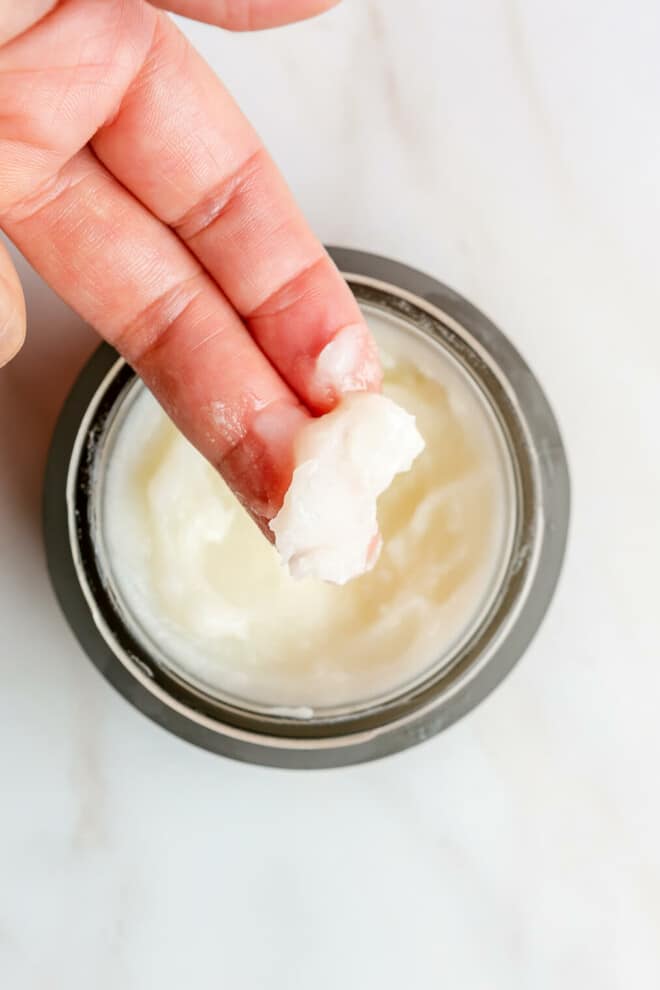
Can a cleansing balm be used as a cleaner?
Absolutely! A cleansing balm does an amazing job of breaking down the dirt, oil, and grime from your face. One of the best ways to use a cleansing balm is to massage it into your face (and eye area when removing makeup) for several seconds (without water!). This massaging method will loosen the dirt and oils from your face. Once this is complete, add in a little water and continue to massage.
Finally, you will want to use a cloth to wipe away the balm (and oils, makeup, and sunscreen!) from your face. A cleansing balm also serves as a makeup remover, gently removing foundation, mascara, etc., as well as an overnight hydrating face mask. If your skin is dry and needs some extra hydration, washing your face with the cleansing balm first, then applying another dime-sized amount of it to your face (after it’s clean) and sleeping with it on all night will boost your skin’s hydration. Because of its strong actives, this overnight mask is not recommended for those with sensitive skin.
What should I use after a cleansing balm?
Just like you would with a regular water-based cleanser, after you use a cleansing balm, you’ll want to complete your routine with a toner, serum, and moisturizer. Each of these four steps is designed to do different things and benefit your skin in unique ways.
- A cleanser cleanses, removing dirt, oil, and makeup acquired throughout the day.
- A toner is the “prep” step, getting your skin ready to receive serum and moisturizer. It does this by returning your skin to a more acidic pH level. When your skin interacts with water and a cleanser, the pH goes up, making it susceptible to bacteria. A toner helps restore the skin back to a healthy (and lower) pH level, which wards off bacteria and helps get your skin ready for the rest of its routine.
- The next step, “the treat step,” is a serum. This is the holy grail of skincare! A serum is designed to have more actives in it than all of your other face products (like a cleanser or moisturizer). A serum treats your face for issues like acne, fine lines, and wrinkles, or dryness. If you have anything you want to correct about your skin, a serum will be your new best friend.
- Finally, a moisturizer is the “protect” step, locking in all of the other face products you used and protecting your face from environmental factors.
Is cleansing balm good for acne prone skin?
Surprisingly, yes! As Dr. Joshua Zeichner points out, “Skin oil and skin hydration are two separate issues, and many people suffer from breakouts but are still dry. Plus, many acne treatments can dry out the skin, so using hydrating cleansers are beneficial.”
Surprisingly, if your face isn’t hydrated properly, it can overproduce oil, which results in breakouts. Just because you have oil-prone skin, doesn’t mean you should be fearful of or skip out on hydrating products, like a cleansing balm. In fact, it might be especially important for those with oil-prone skin to make sure they are prioritizing hydration in their skincare routine.
There you have it! All of the amazing ways a cleansing balm can benefit your skin (even if it’s oily!). Have you tried cleansing balm before? What did you think?
More Safer Beauty Articles
- Prose Hair Care Review
- At-Home Facial Routine
- Beautycounter Reflect Effect AHA Mask Review
- Gel Polish at Home
- Bakuchiol vs Retinol – Which is Better?
- Best Clean Mascara
- Dazzle Dry vs. Olive and June
Sources:
- https://www.elitedaily.com/p/using-cleansing-balms-for-acne-prone-skin-sounds-counterintuitive-but-its-actually-genius-11892601
- https://theblushingbliss.com/cleansing-balm-vs-oil/ https://www.mywomenstuff.com/2015/01/should-use-cleansing-oil-or-cleansing-balm/
- https://www.skincare.com/product-picks/cleansers/how-to-use-cleansing-balms
- https://eminenceorganics.com/us/blog/2018/06/28/what-difference-between-cleansing-oil-and-cleansing-balm
- https://spotlightonskincare.com/apricot-oil-for-skin-benefits-of-apricot-kernel-oil/ https://www.healthline.com/health/beauty-skin-care/double-cleansing#who-its-for
- https://dryskinadvice.com/can-cleansing-oil-cause-breakouts/
- https://makeupandbeauty.com/9-benefits-of-using-lotus-infused-beauty-products/
- https://urhealthclub.com/lotus-for-skin/
- https://www.byrdie.com/avocado-oil-for-skin-4846442
- https://www.healthline.com/health/beauty-skin-care/jojoba-oil-for-face#antibacterial
- https://www.mindbodygreen.com/articles/shea-butter-for-skin
- https://www.webmd.com/vitamins/ai/ingredientmono-1512/shea-butter
- https://www.beautycounter.com/the-never-list
